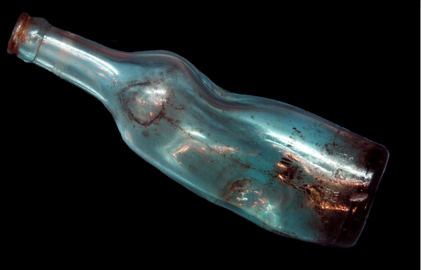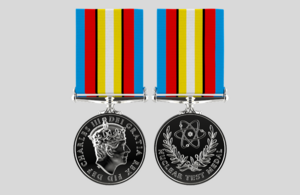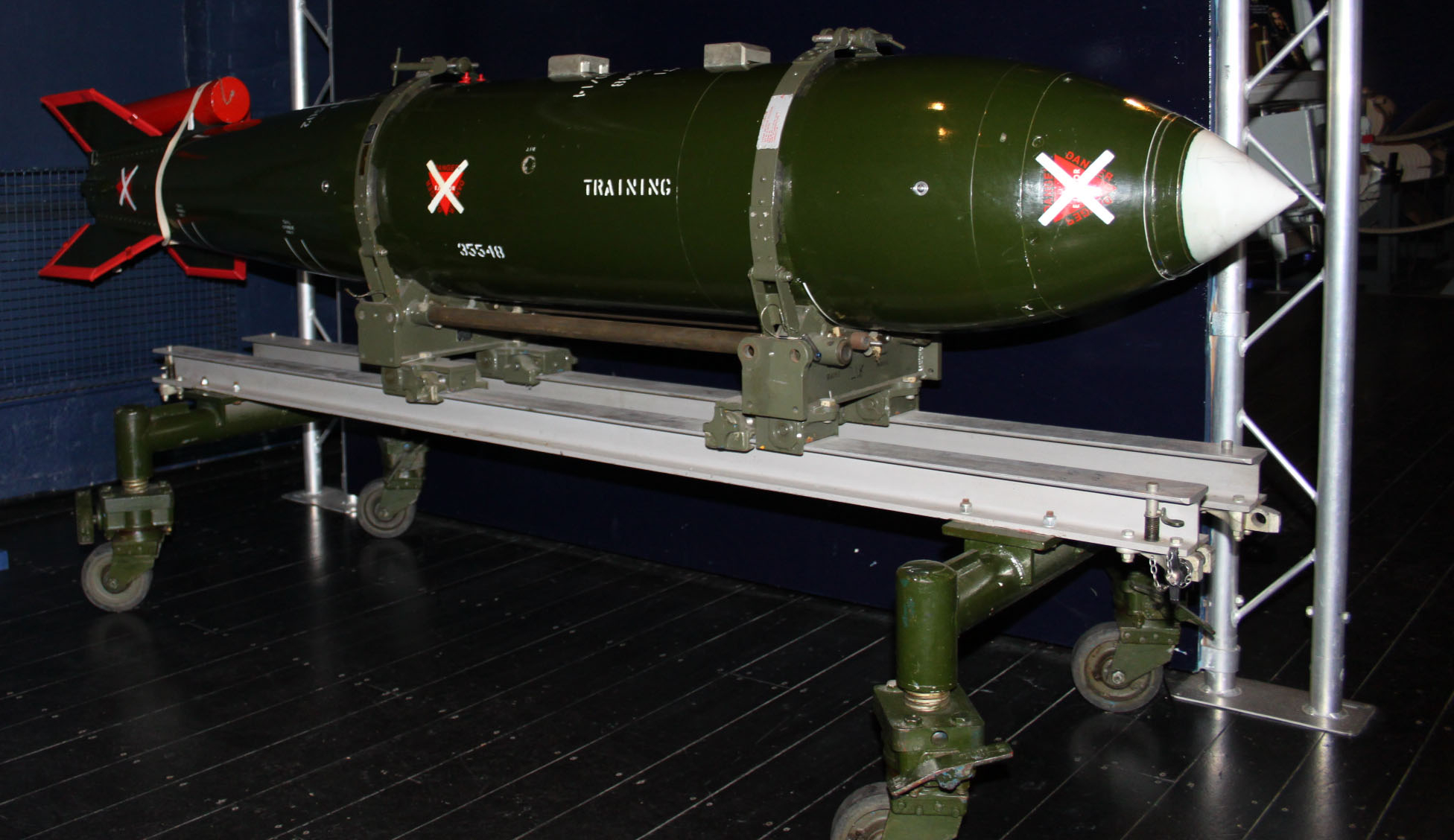Nuclear Testing and the Royal Navy - Unpacking the impact of High Explosive Research
- View news filtered by: Cold War
- View news filtered by: Innovation and Exploration
- View news filtered by: Technology & Engineering
- View news filtered by type: Blog

Following the release of Christopher Nolan’s new film Oppenheimer, which has seen a renewed interest in the story of one of the most famous names behind the atomic bomb, and the recent news that the MOD are honouring veterans of Britain’s nuclear testing with a new medal, the early days of nuclear weapon development have taken centre stage.

The lead up to the Manhattan Project
While the work of J. Robert Oppenheimer and the Manhattan Project are well-known, less so is the work before and after by the British government. Two German refugees at the University of Birmingham in 1940, Otto Frisch and Rudolf Peierls, contributed the most important discovery in these early days. They discovered that it was easier to produce a large enough nuclear weapon than had been thought. Needing less nuclear material would make it easier and quicker to produce.
Operation Tube Alloys was Britain’s first major attempt to create a nuclear weapon. This project begun in 1941 predating the American Manhattan Project. The work was expensive. For instance, the whole of the Manhattan Project cost $2.2 billion, around $34 billion in today's money (or worth about two of Jeff Bezos, the owner of Amazon and one of the richest people in the world). These factors, and others led Britain to agree to absorb Tube Alloys into the Manhattan Project with the Quebec Agreement of 1943. British scientists worked in America for the project, and at least one was in an observation plane as the bombs were dropped on Japan.
After the Manhattan Project
Following the end of the Second World War Britain developed its own nuclear weapons programme, ‘High Explosive Research’ (HER). Scientists who had worked on the Manhattan Project also worked on HER. This was all being undertaken despite the huge cost of the Second World War. There was a concern around the USA returning to its policy of isolationism. This meant it would not get involved in foreign conflicts, and leave the Allied nations to fend for themselves. This was worrying in a time of readily-available nuclear weapons.
The Soviet Union pushed Britain back to third place, as they tested their atomic bomb in 1949. If Britain could build a bomb in time. America was eager to bring Britain into the fold, no doubt due to the growing nuclear capability of the Soviet Union. Britain tried to renegotiate these terms for cooperation, but failed, and Britain was left to work on its own again.
In 1952 full-scale nuclear weapon tests were ready to begin, under the name Operation Hurricane. Testing was carried out around the Monte Bello Islands in Australia. This device was detonated onboard a ship, HMS Plym, which was destroyed in the test. Involved in this operation were five Royal Navy ships, HMS Campania, HMS Narvik, HMS Plym, HMS Tracker and HMS Zeebrugge. These ships, alongside 11 from Australia, were led by Rear Admiral A.D. Torlesse. The Monte Bello islands were the staging ground for other nuclear tests. Due to this testing the itself became irraditated to the point where it was a no-go zone until 1992. To this day the government of Australia advises not spending more than an hour per day on some of the islands.
A certificate awarded to a Chaplain onboard HMS Campania for his presence at Operation Hurricane features in our collection. Also in our collection are 15 issues of HMS Plym’s ship magazine entitled ‘The Plym Pudding’, covering the period of her involvement in the operation.
Completion of the test turned Britain into the third nuclear power in the world, behind the United States and the Soviet Union.
There were 45 British nuclear tests, starting in Australia, then Australia’s territory of Kiritimati (also known as Christmas Island). These tests then moving to Nevada in the United States. In 1963 the Partial Test Ban Treaty outlawed above ground nuclear tests. This outright banned the kind of testing used before.
In 1963 Britain began buying Polaris missiles from the USA. This ultimately pushed control of Britain’s nuclear deterrent from the RAF to the Royal Navy, as Polaris missiles are fired via submarine. While Britain purchased the missile, the nuclear warhead was still developed by them. In 1982 Britain purchased its new, and current, nuclear deterrent Trident. The Royal Navy continues to operate the UK’s continuous at sea deterrent (CASD), ready to act if required.
The human cost of nuclear testing
The human cost of nuclear testing, let alone the active use of nuclear weaponry at Hiroshima and Nagasaki, is an important part of this story. Around 40,000 personnel across the armed forces took part in testing in the 1950s and 1960s. Some of the most controversial testing took place onboard HMS Diana during Operation Mosaic. Orders were for the ship, and its 308 crew, to sail through the fallout zone of two nuclear blasts. It is believed that the aim was to test the effect of fallout on the ship and its crew.
Campaigns have been run by veterans of British nuclear testing and their families about the effects of these tests on those directly involved, indigenous populations and on the environment. It has been reported that many suffered serious side-effects from their exposure to radiation, and that this has also affected their children. Two vocal groups are LABRATS (Legacy of the Atomic Bomb Recognition for Atomic Test Survivors) and the BNTVA (British Nuclear Test Veterans Association). The Ministry of Defence, however, has said that three large studies of nuclear test veterans "found no valid evidence to link participation in these tests to ill health".
The largest test undertaken was Operation Grapple, taking place in Kiritimati (sometimes known as Christmas Island.) This test included 22,000 personnel. A map from this operation is in our collection.
How you can find out more
The collection of the National Museum of the Royal Navy helps to tell stories of nuclear weapons development. One interesting artefact from our collection is a molten glass bottle from Hiroshima. Picked up by a sailor on HMS Belfast, this bottle is now on display in the HMS Gallery, Portsmouth. An image of this is at the top of the page.
In Gosport at the Royal Navy Submarine Museum, the Silent and Secret exhibition chronicles the continual deterrent at sea (CASD) of British submarines armed with nuclear warheads. The exhibition includes a Polaris missile, and the set of keys used to arm the nuclear missiles onboard HMS Revenge.
Nearby at the Explosion Museum of Naval Firepower you can see a WE177A nuclear depth charge or bomb. This is a training variant of the multi-role, aircraft-dropped nuclear weapon; it could also be dropped by helicopters as a nuclear depth charge. In the Royal Navy it was carried by Blackburn Buccaneers and the Sea Harrier aircraft, and replaced Red Beard, Britain’s first tactical nuclear weapon.
For items not on display, and discussed earlier, visitors can book a session with our collections team to view them. We are unfortunately unable to guarantee access to every item discussed in this blog.
This blog comes at a time when the government has recently announced a medal for those who took part in British nuclear testing, to be awarded posthumously and to surviving veterans and civilian staff. The Nuclear Test medal is also being awarded to those overseas who worked on the projects. Eligible civilians, veterans and their next of kin can apply for this medal to receive it before Remembrance Sunday.
